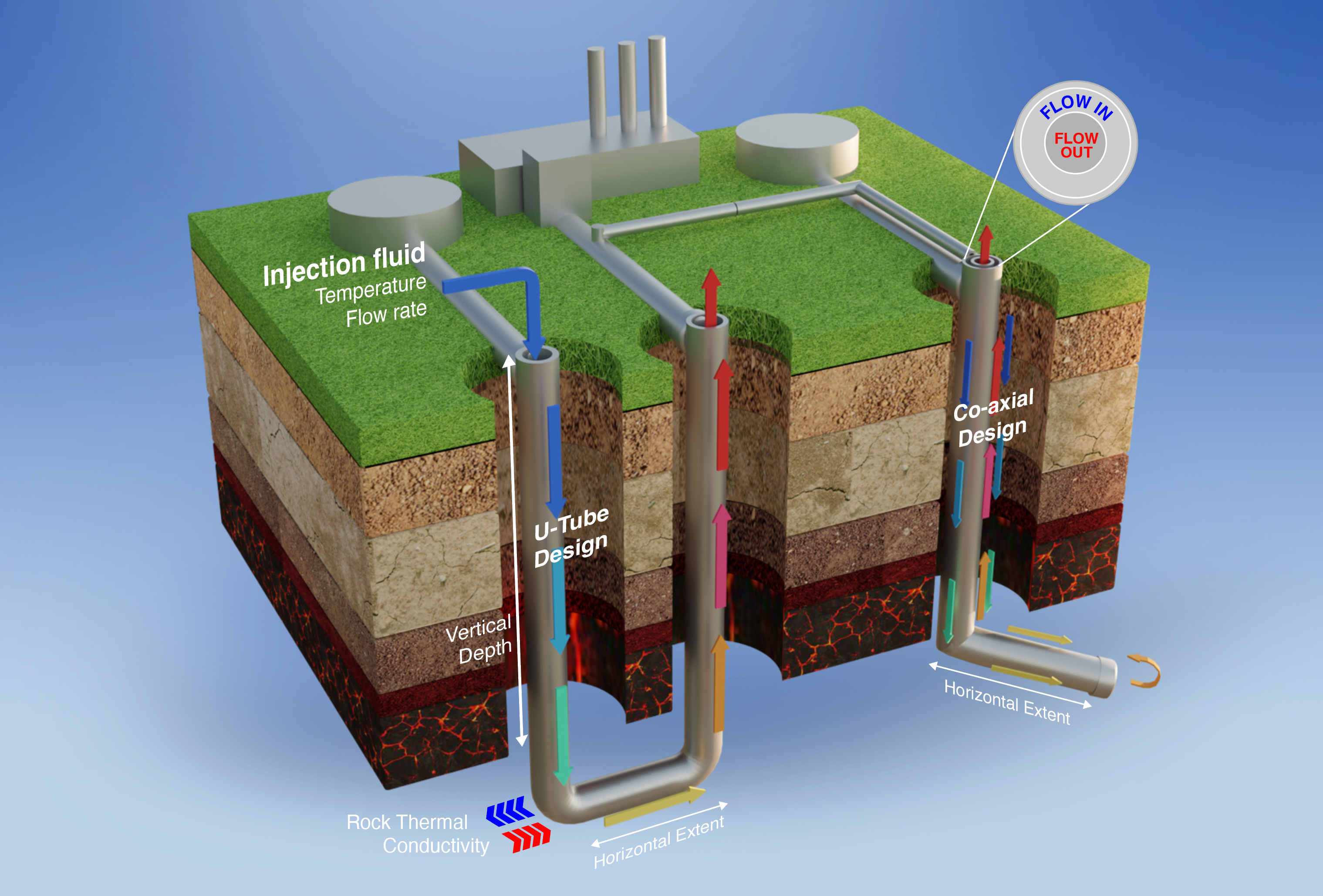ALBUQUERQUE, N.M. — Geothermal power has a lot of promise as a renewable energy source that is not dependent on the sun shining or the wind blowing, but it has some challenges to wide adoption. One of these challenges is that there are a limited number of locations in the U.S. that naturally have the right conditions: hot rock relatively close to the surface and with plentiful groundwater to heat up.

Closed-loop geothermal is one way to use hot, dry rock to heat up circulating fluids to generate electricity or to directly heat buildings, a way that is being reexamined after being dismissed in the ’80s for being too inefficient. A team composed of experts at several national laboratories has recently finished a two-year effort to computationally model closed-loop geothermal systems.
One of the key challenges with closed-loop geothermal is building a system that can extract enough heat from the deep earth to be cost-effective, said Mario Martinez, a mechanical engineer and the principal investigator for the project at Sandia National Laboratories.
“The subsurface, the rock, becomes hotter the deeper you go, so it is beneficial to go deep,” said Martinez, who recently retired. “That hot water can be used for district heating, so you can use it to heat houses and buildings, or you can use it to generate electricity.”
Sandia led the computational modeling of the belowground system, while the National Renewable Energy Laboratory used the numerical results to estimate the economic viability of the system through their aboveground power plant and economic model. The overall project was led by Pacific Northwest National Laboratory and mechanical engineer Mark White. Anastasia Bernat, a PNNL data scientist, integrated the Sandia and NREL models into a publicly available web tool to allow start-up developers and venture capitalists to explore the economic viability of various closed-loop geothermal system designs. Idaho National Laboratory shared variables from a prototype geothermal system at the lab and studied various possible enhancements to closed-loop geothermal systems to improve their economic viability.
The researchers shared their results in the form of a paper published recently in the scientific journal Geothermics. The Department of Energy Geothermal Technologies Office supported the research.
Probing potent parameters
The Sandia team looked at two basic setups for closed-loop geothermal systems. One, called a U-tube, is where cool water is pumped down one deep vertical pipe, which then extends horizontally for a certain distance at a depth where the rock is hot and then comes up in a different location, Martinez said. The other, called a tube-in-a-tube, is where the cool water is pumped down along the outer layer of a pipe to a certain depth, and then the pipe takes a 90-degree turn and extends a horizontal distance at that depth. Then the hot water hits the end of the pipe and is pushed into the inner pipe, back up the way it came.
The Sandia team looked at depths ranging from 0.6 miles to slightly over 3 miles, as well as the distance traveled at that depth from 0.6 miles to almost 12.5 miles. They looked at several different factors, one of which was whether to circulate water or supercritical carbon dioxide, a gas that is under so much pressure it acts more like a liquid and can absorb more heat, Martinez said.
They also looked at the temperature of the fluid going down the well and how fast the fluid was being pumped down. Other parameters they studied included how quickly the rock heated up with depth, how well the rock transferred heat to the circulating fluid in the pipe, and how large the pipe diameter is.
The Sandia team used an engineering mechanics simulation software package called Sierra and parametric analysis software Dakota to look at all the different parameters, said Yaro Vasyliv, a Sandia computer scientist who develops Sierra codes and was involved in this project.
“We varied seven parameters and computed corresponding outlet temperatures and pressures,” Vasyliv said. “You can feed that into an aboveground model that computes the levelized cost of heat and the levelized cost of electricity, which is what NREL worked on.”
Simplified model simulates scores of systems
Using a simplified numerical model instead of a full 3D representation, and running the computations on Sandia’s high-performance computing clusters, allowed the researchers to model several million sets of parameters, Martinez said.
“Part of the novelty of this work is that we could analyze so many different cases, so many different parameters for those two fluids and those two designs — the U-tube and the tube-in-a-tube,” he said.
The Sandia researchers also did more time-intensive models of geothermal systems in permeable rock with groundwater, where the additional convective heat transfer would produce a more rapid and sustained transfer of heat from the rock to the circulating fluid. They found that this increased heat transfer also improved the economic viability of a closed-loop geothermal system.
“Wet rock is better, and it can be quite a bit better, but there aren’t many places that naturally have those conditions,” Martinez said.
The Sandia researchers looked at several possible enhancements to the system, such as coating the well with high-thermal-conductivity cement. They found that it would be better to just make the pipe larger, Martinez said. They also found that their model could approximate the efficiency of a multi-pronged or “spider” geothermal configuration by merely setting the horizontal extent in the tool to the total extent of all the legs, Martinez said.
“We asked the question, ‘what is the drilling cost required to meet DOE’s 2035 target for the levelized cost of electricity for enhanced geothermal systems?’” Vasyliv said. “This target is $45 per megawatt-hour. We found that to achieve this goal using closed-loop systems in hot, dry rock, there would need to be a very aggressive reduction in the cost of drilling.”